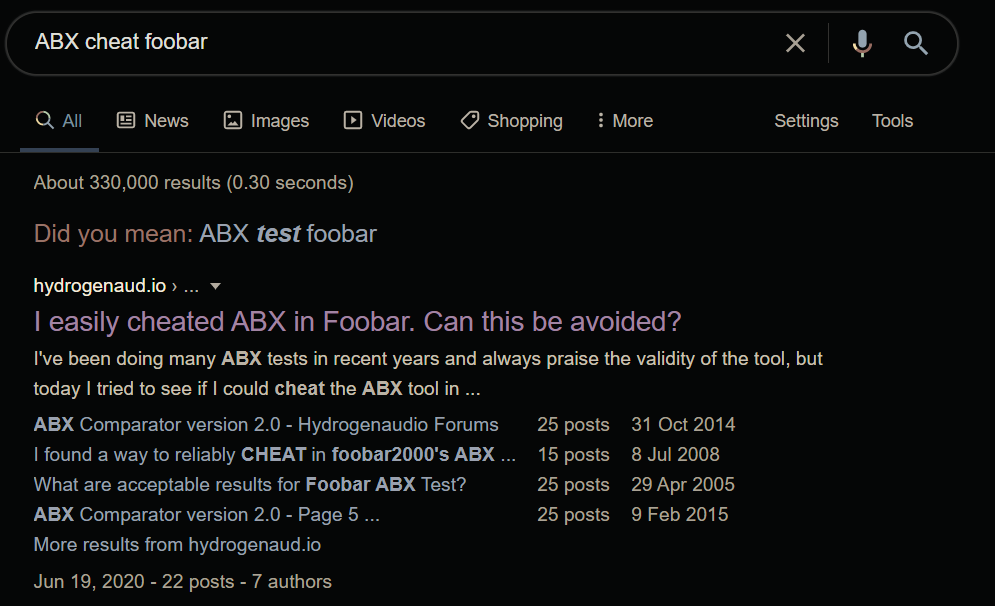KeithPhantom
100+ Head-Fier
I didn't want to express my disagreement with this, but as a person at the other side of a device that allows us to communicate, I would like to express that I do not agree with you on this statement. -40 dBFS (assuming 0 dBFS to be a reasonable 80 to 90 dB SPL) is noticeable with music and test tones (watch Ethan Winer's video where he does this experiment). A DAC with distortion in this range may or may not be different than other DACs depending on the frequencies involved, the intermodulation/harmonic distortion, and the noise level. This is supported by the collective effort of ASR that measured and did listening test with an occasional ABX, where it was found that many horribly measuring DACs (SFDR around 40 dB) either didn't change the sound or just did it slightly. There are outliers in every situation (just read the paper where 3 out of 32 subjects could detect in lab-perfect conditions a signal of 28 kHz, but I consider this an outlier, not definite evidence of ultrasound detection capabilities by humans), and these are expected out of every situation, even from many established opinions in science. Science will change if evidence is presented, the methodology is scrutinized, and results are replicated, science isn't static.See the video link in my sig for a demonstration of what -40dB actually sounds like. For the purposes of playing music in the home, that is inaudible.
Sorry @castleofargh I wanted to express my opinion, I'm not talking about ultrasonics or inaudibility, I'm now restricting myself to talk about bit depth in this specific thread.
Last edited:




















